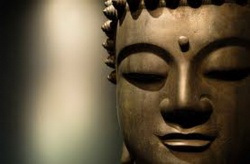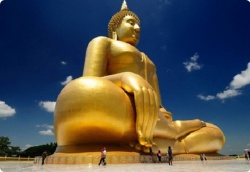How Buddha Came to Allow Full Ordination for Women
How Buddha Came to Allow Full Ordination for Women:
While he was staying in Kapilavastu, Mahaprajapati Gautami (Lord Buddha’s aunt and foster mother) went to see the Blessed One. Grieving over the death of Buddha’s father, she bowed before Buddha and, standing to the side, requested him to allow women to renounce their homes and enter the homeless state under the doctrine and whatever discipline the Blessed One would dictate.
Before this time, women had not been allowed ordination, one of the reasons being that they were recognized as the pillar of the family and it was feared if they were allowed to leave their homes, there would be no more support for the families – the men and children.
For this reason Buddha replied, “Enough, Gautami!” Still, she made this same request three times. Three times the same answer was given. Sadly, Gautami left the Buddha.
Briefly, Gautami and 500 other women (princesses whose husbands had left them behind to take ordination and follow Buddha) followed Buddha and listened to the teachings as renounced persons – wearing robes, with shaved heads.
Ananda, Buddha’s personal attendant, saw the hardships the women endured following the Buddha and went to Buddha and asked why he didn’t ordain them. Can’t women become arhats too?
Buddha said that if he gave ordination to the women the life of the Dharma in this age would be shortened by 500 years or more. Ananda was near Buddha often though and asked many times for the ordination on behalf of the women. After many requests, Buddha agreed.
“I will give them eight rules. If they agree to this, then this will be the ordination.”
Ananda went to Gautami and told her what Buddha had said. She accepted. Buddha then gave the women eight rules.
The Origin of the Eight Rules:
While Shakyamuni Buddha was living in the palace of his father the king, he was given everything one could dream of in terms of worldly treasure in order to keep him happy, and so he wouldn’t want to leave. One of the things Buddha was given was a retinue of women.
During this time he saw the women were jealous of each other and vain, and very competitive when serving him. Buddha felt nuns would need help controlling these tendencies so the eight rules were set up specifically for women. One vow, for instance, states that any nun, no matter how long she has been ordained, must stand and show respect when any monk enters a room.
About Vows:
The purpose of vows is not to restrain oneself, but rather to set up a clearly defined mandala within which one can practice pure vinaya.
As time passed, Lord Buddha gave a body of advice on the conduct necessary for personal liberation. This is called the vinaya. Within the vinaya there are sections containing instruction for monks and nuns, the bhikshuni (Skt.)/gelongma (Tib.) Vinaya does not exist as a complete independent unit.

